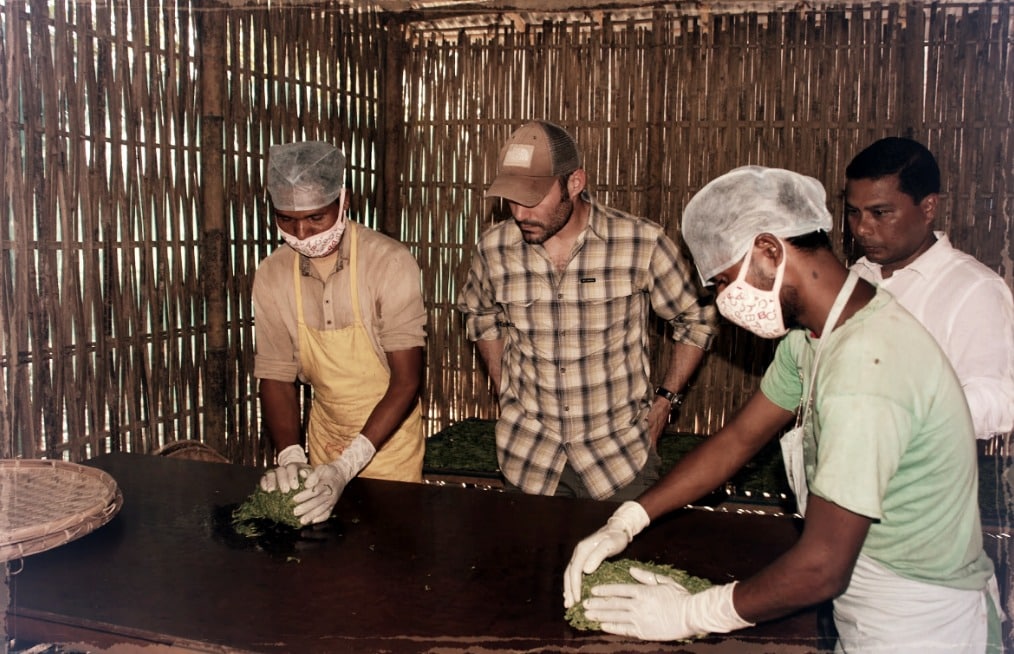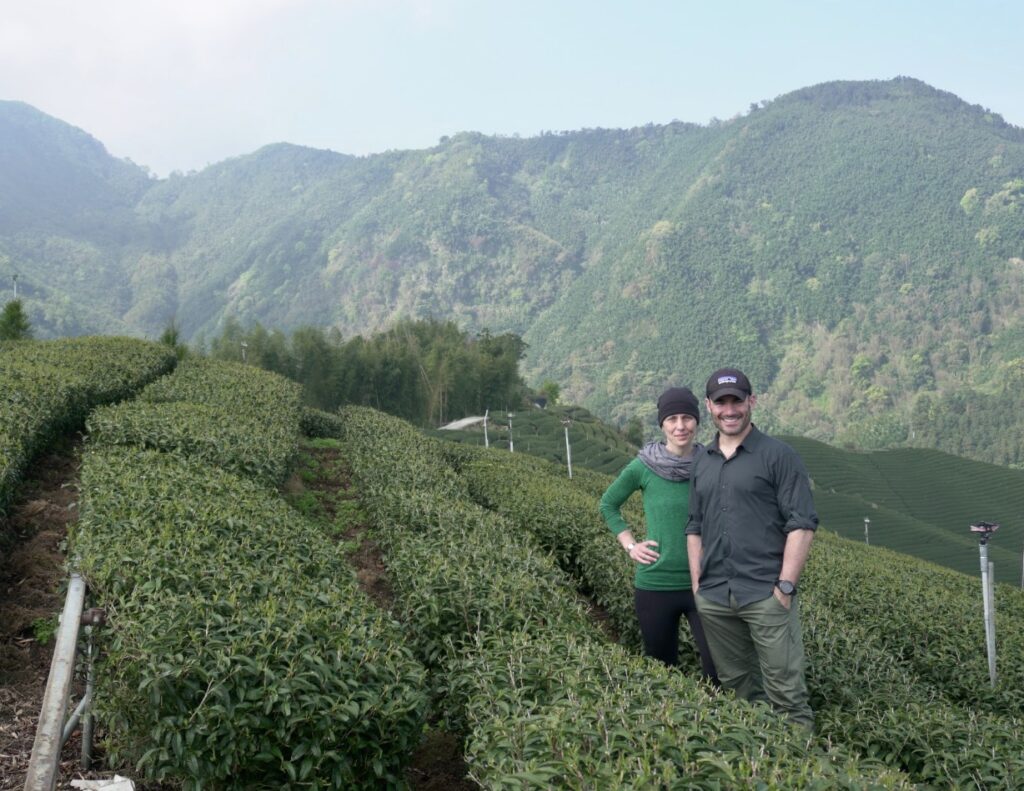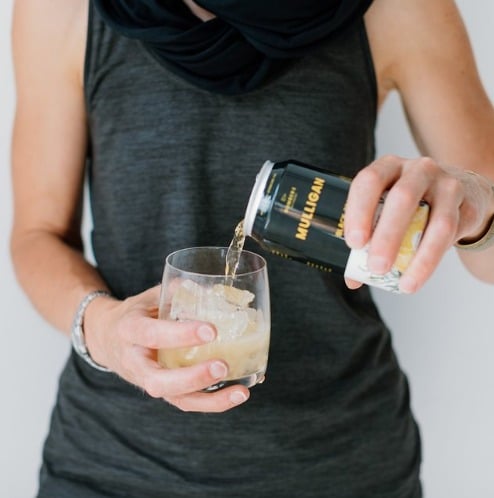As I was surfing the internet one day, I came across a tea sommelier program offered by the Tea and Herbal Association of Canada. Curious to discover what tea was all about, I registered for their introductory course without any real expectations of what I would see, taste and learn. It didn’t take long for me to understand that tea has so much more to offer, and comes in so many varieties, tastes and parts of the world. It is far more interesting and dynamic than the product we find packaged in small bags and sold in boxes at the grocery store – the way my parents and so many Canadians are still drinking it today. For them, and most others in the western world, tea is normally consumed in a big mug with the bag left in for a long period of time to steep. Due to the lack of flavour of those mass-produced teas, or out of personal habit, people often add milk and sugar to remove any perceived bitterness or to give a flavour boost to their infusion. What I have learned is that tea has been grown, processed and marketed for untold centuries in many countries around the world. What we see in our cups is the end result of a fascinating process which originates from an evergreen shrub called Camelia Sinensis. Regardless of where you are in the world, or the sophistication of the production operation, it is interesting to know that the leaves all go through some of the same manufacturing steps of plucking, withering, bruising, fixing, shaping, drying, sorting and packing before being shipped to either local retailers or abroad. It is a remarkable process and is as diverse in outcome as the nations and individual farmers who grow and cultivate this wonderful crop. What follows is a short description of the six different tea types available, all of which have their own distinctive flavours and aroma profiles.

Image of a Camellia Sinensis Tea Plant displayed at the Pinglin Tea Museum in Taiwan.
White Tea
Produced mostly in the Fujian province of China, white tea can also be found in countries such as Nepal or India. Regarded as one of the rarest and most expensive teas available on the market today, it consists of the unfurled buds as well as the youngest and most tender leaves of the Camellia Sinensis. Delicately harvested by hand at the beginning of the season, the leaves are left to wither under the sun or indoors under controlled conditions for about two days before the final drying step which deactivates the oxidation process. This minimally processed tea offers delicate and subtle flavors such as peaches and apricots. Silver Needle which earned its name from the fuzzy white hair that covers the buds, and White Peony also known as Pai Mu Tan, which is made from the buds and two young leaves, are two of the most common white teas.
Yellow Tea
Initially reserved for Chinese Emperors, this tea is difficult to find due to its difficult and time consuming production methods. The process for making yellow tea is similar to that of green tea but with an additional step called Men Huan or sealing yellow. Once they have been plucked, the buds and tips are pan-fired for a short period of time – just enough so they can retain a minimal amount of water. They are then wrapped immediately into a paper or cotton cloth and left for a few hours. It is during that moment that the leaves will change colors to become yellow. The tea is panned for a second time before being wrapped and heaped again. This process can be repeated up to three to four times and can last up to a few days. The brewing results in a sweet and refreshing flavour.
Green Tea
In recent years green tea has seen an increase in its popularity due to components such as polyphenols and amino acids considered to be beneficial for human health. Green tea production involves the withering and steaming or pan firing of the leaves which immediately stops the oxidation process. This also helps with preserving their freshness and green color – just before being rolled to drain the excess moisture and finally dried. Green teas offer flavours that range from sweet and mellow to grassy and oceanic. Varieties of green tea include Bilochun, Gunpowder, Longjing, Maojian, Genmaicha, Gyokuro, Sencha, Hojicha, Ujeon and Sejak just to name a few. If brewed properly, a quality green tea should only offer a slight level of astringency.

Workers Hand Rolling Green Tea in India.
Oolong Tea
This tea is recognized for its difficult processing method. It starts with a mid-afternoon plucking by hand or machine of the first opened bud and the following three leaves before being spread on a canvas, usually outdoors, to wither in order to prevent leaf alteration from moisture. The leaves are transferred on bamboo plates in a room and exposed to specific temperatures for a variable period of time for the oxidation process that will give the leaves their final flavours. The level of oxidation vary and can be as low as 10 per cent for the lighter more floral Oolongs or go up to 70 per cent for the stronger and nuttier Oolongs. Once the desired level of oxidation has been reached, the leaves are transferred into a big cylindrical dryer to stop from further oxidation. They are then put in a roller before the final drying and resting steps take place. Attention must be taken to not bake the tea too much has it will give a burnt character to the infusion.
Black Tea
Black tea is mostly recognized by its strong flavor profile and for being able to handle additives such as dairy, sugar or even lemon. After being plucked, the leaves are left to wither to reduce their water content. Then, through a rolling (Orthodox) or a cutting (CTC) process they are macerated to rupture their cell walls which will initiate the release of their natural juices and chemicals. This steps also lets in the oxygen resulting in the browning of the leaf which can be compared to a slice of apple that has been left on the counter. The leaves are finally dried and later sifted for gradation. Black teas are oftentimes produced in India (Assam, Darjeeling, Nilgiri), Sri Lanka (Ceylon) and Kenya but you can also find them coming from other countries. This fully oxidized tea offer flavours of malt, cinnamon, chocolate, honey and muscatel.

Tea grading system for black tea in India.
Pu-Ehr
Produced in the Yunnan Province of China, this very special type of tea is mostly unknown in the Western world. This fermented tea comes under two different styles that undergo the same initial steps of killing the green – rolling/forming – drying and steaming. For the Sheng or raw Pu-Ehr, the leaves are graded according to their size before being compressed into cakes with a stone or an hydraulic press, wrapped with rice paper and stored in temperature-controlled rooms to age for 10 to 50 years. Developed in the 1970’s the production of Shou Pu-Ehr (cooked/ripe) implies an accelerated fermentation process which starts by placing the covered leaves in a room at high temperature with a high level of humidity for a period that range between 45 to 65 days. The leaves are finally sorted through a machine and by hand to eliminate the non-fermented leaves before being pressed by a machine. Pu-Ehr teas are known for their earthy flavors and aroma
It is important for people to understand that each variety of tea is influenced by many factors such as country of origin, type of soil, climate and its daily variations (temperature, hours of sunshine, rainfall), altitude (low grown vs high grown), season (first flush vs second flush, ujeon vs daejack), plucking methods (hand vs machine) and manufacturing processes. This can explain why a specific single origin tea might taste different from one lot to another and why its complexity put this commodity in the same category as wine, coffee and chocolate.

Sarah + Chris
What is your favorite type of tea and why? Let us know in the comments below.


